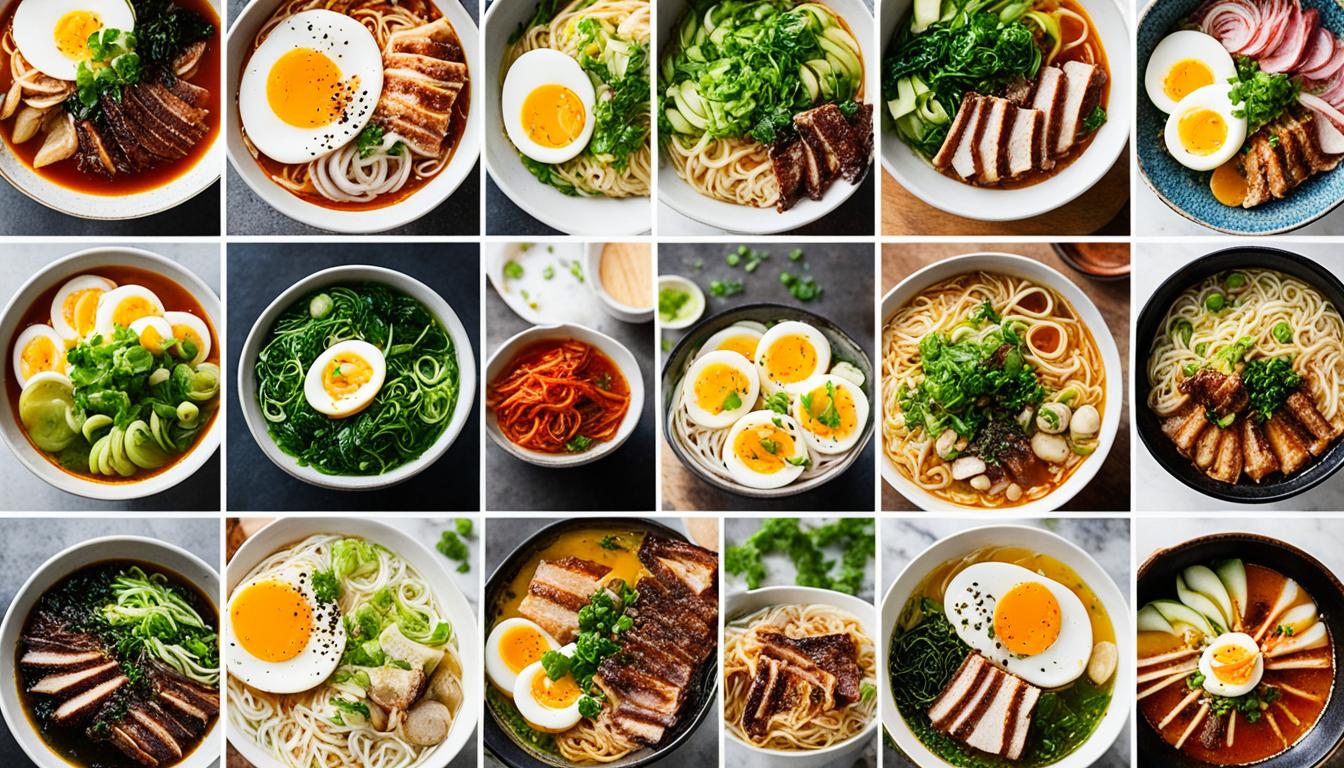Are you ready to embark on a savory journey through the world of ramen? If so, you’re in for a treat. We invite you to join us as we dive into the intricate flavors and diverse styles of this beloved noodle soup. From the rich broths to the perfectly cooked noodles and delicious toppings, ramen is a culinary art form that has captivated food lovers worldwide.
When it comes to exploring the vast realm of ramen, there’s no better guide than the Serious Eats website. Known for its dedication to all things delicious, Serious Eats has compiled an extensive guide to ramen styles that will leave you craving a steaming bowl of this iconic Japanese cuisine.
So, buckle up and get ready to tantalize your taste buds and expand your understanding of ramen. We’ll delve into the various broths that form the heart and soul of each bowl, uncover the secrets behind the perfect ramen noodles, and explore the regional styles and specialties that make this dish so diverse and fascinating.
The Broths
When it comes to ramen, the broth plays a crucial role in creating the rich and flavorful base for the dish. Ramen broths can be categorized into four main types: shio (salt), shoyu (soy sauce), miso (fermented bean paste), and tonkotsu (pork). However, it’s important to note that there are many variations and overlaps within these categories. The broth base can also vary, ranging from animal bones to seafood or vegetable-based broths.
Additionally, the seasoning used in the broth, such as sea salt, soy sauce, or miso, can further enhance the flavor profile of the ramen. Each type of broth offers its own unique taste and character, appealing to different preferences. The shio broth is light and delicate, highlighting the natural flavors of the other ingredients. Shoyu broth, on the other hand, has a savory and slightly sweet profile due to the soy sauce. The miso broth adds a rich and complex umami flavor to the ramen, while the tonkotsu broth is known for its creamy and porky goodness.
Experimenting with different ramen broths allows you to explore the diverse range of flavors and find your personal favorite. Whether you prefer the simplicity of the shio broth or the boldness of the tonkotsu broth, there is a ramen flavor to satisfy every palate.
The Noodles
The choice of noodles is another essential element in a bowl of ramen. Ramen noodles come in various shapes, sizes, and textures, each selected to complement the soup. Traditional ramen noodles, made with wheat flour, salt, water, and kansui, an alkaline water, have a characteristic bounce and yellow color.
There are different types of ramen noodles to cater to various preferences. Fresh noodles are commonly used in high-end ramen shops, where they are made in-house daily. These noodles have a tender texture and a rich, chewy bite. On the other hand, dried noodles, available in pre-packaged form, are a popular choice for home cooking. They offer convenience without compromising on taste and texture.
One of the most recognizable forms of ramen noodles is instant noodles. Invented in the 1950s, instant noodles revolutionized the way people enjoy this beloved dish. They are precooked and dehydrated, making them quick and easy to prepare. Perfect for a quick meal or snack, instant noodles have become a staple in many households.
The variety of ramen noodles available ensures that there is something to suit every taste and cooking style. Whether you prefer the freshness of homemade noodles, the convenience of dried noodles, or the instant gratification of instant noodles, there are options to satisfy your cravings. Whichever type you choose, the noodles are an integral part of experiencing the true essence of ramen.
Regional Styles and Specialties
Ramen is a culinary journey that takes us through the diverse regional styles and specialties of Japan. Each city and region in Japan has its own unique take on this beloved noodle dish, showcasing distinct flavors and ingredients that reflect their local culinary traditions.
One such regional variation is Hakata-style ramen from Fukuoka. Known for its rich tonkotsu broth made from simmered pork bones, Hakata ramen is a hearty and flavorful delight. The noodles in Hakata ramen are thin and straight, offering a delicate texture that perfectly complements the robust broth.
On the other hand, we have Tokyo-style ramen, which features a soy sauce-based broth and medium-thick, curly noodles. The soy sauce broth lends a savory and umami flavor to the dish, while the curly noodles provide a satisfying chew. Tokyo ramen is a favorite among locals and visitors alike, offering a taste of the bustling city’s distinct culinary identity.
And let’s not forget Sapporo-style ramen from Hokkaido. This regional variation showcases a miso-based broth that is both rich and hearty. The broth is accented with various ingredients like corn, butter, and seafood, resulting in a complex and indulgent flavor profile. Sapporo ramen is typically served with thick, wavy noodles that enhance the overall eating experience.
